The Ultimate Viewing Guide To 2019’s Pan-American Supermoon Lunar Eclipse
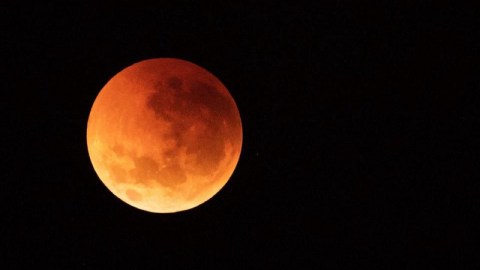
Whether you caught or missed the eclipse of January 20/21, 2019, here’s what you need to know for all the ones you’ll ever view again.
On January 20/21, 2019, a very special astronomical event will occur: the Moon will pass completely into the Earth’s shadow, creating a total lunar eclipse. Visible from all of North and South America, as well as parts of western Africa, northern and western Europe, and northern Asia, it marks the first Pan-American eclipse of the 21st century.
Unlike its counterpart — a total solar eclipse — there are no special places you need to be. There is no special equipment you need to view it or enjoy it, and so long as your skies cooperate and the Moon doesn’t set on you, you’ll be able to enjoy the entirety of the eclipse. It’s one of the night sky’s most spectacular and accessible sights, and there are over a billion people who’ll have the opportunity to take advantage of it. Here’s your guide to making the most of it.
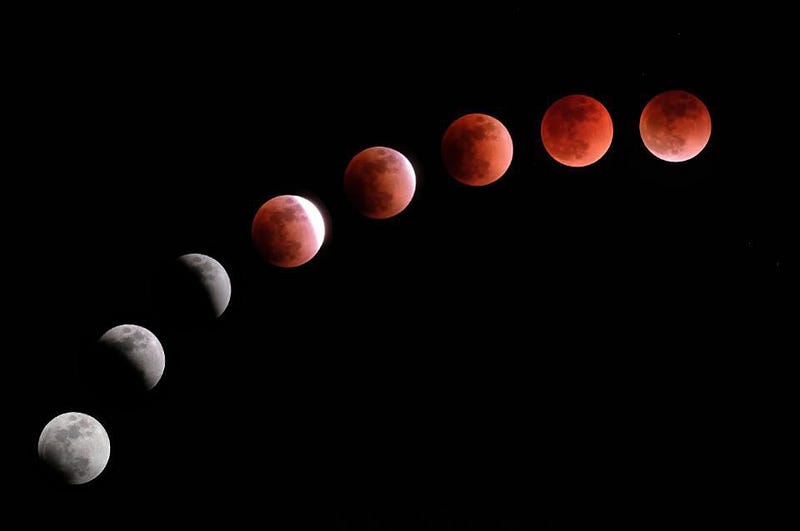
The first thing you’ll want to know is what to expect during a total lunar eclipse.
For skywatchers across half the globe, the full Moon will appear to darken on one side (the penumbral phase), then begin to get swallowed as the Earth’s disk-like shadow appears to consume the Moon (the partial phase). When the entire Moon is eclipsed, it won’t disappear, but rather will appear to take on a faint red color, with one limb always appearing whiter than the rest of it. Over the course of an hour, the whiter portion will appear to migrate from one side to the other, while the full eclipsed Moon itself shines with just 0.0001% the brightness of an uneclipsed full Moon (the total phase). As totality ends, a thin white crescent will reappear, as Earth’s shadow moves off of the Moon (a second partial phase). Finally, the darkened limb of the Moon, where Earth’s shadow just departed, will return to its normal, full brightness (a second penumbral phase).
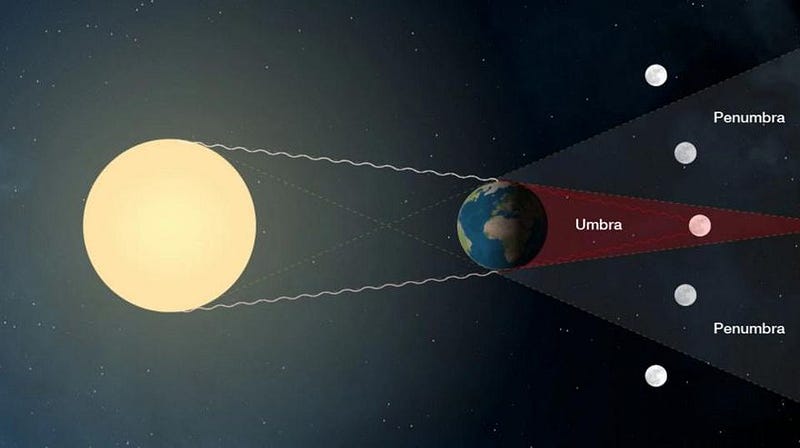
For those of you who’ve seen a total solar eclipse, you might remember how quickly it all occurred. A slow covering of the Sun’s disk by the Moon — visible only with eclipse glasses or a projected image of the Sun — gets followed by only a few minutes of totality, with the Sun’s disk getting uncovered by the Moon in the same amount of time it took to cover it.
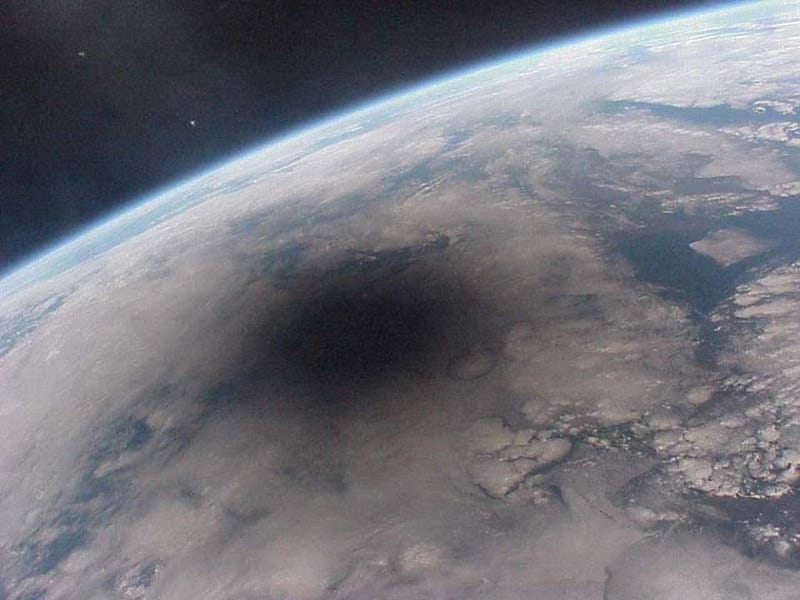
Well, a lunar eclipse is nothing like that. In fact, for this particular eclipse, here’s what you can expect.
- The first penumbral phase lasts approximately 57 minutes, and isn’t really worth watching except for the most dedicated of skywatchers.
- During the first partial phase, it takes 67 minutes for the Moon’s face to go from 0% covered to 100% covered. I recommend watching at least the last half of this.
- The total phase lasts 62 minutes, and is the most spectacular part of the show. I recommend sticking around for its entirety, and paying close attention to the redness of the Moon 31 minutes into totality: where it becomes the reddest and experiences its maximal eclipse.
- When totality ends, you get a second partial phase: a reverse of the first partial phase. It also lasts 67 minutes. You might be ready to leave about 10-to-15 minutes into this phase.
- And for another 67 minutes, you get a second penumbral phase, as the darkened Moon returns to its original brightness.

That’s a long time! If you went out at the beginning of the first penumbral phase and stayed until the end of the second penumbral phase, you’d be out there a total of 5 hours and 12 minutes, which is too long for even the majority of very enthusiastic astronomers to enjoy simply looking at the Moon.
So I’ve compiled a list of things you should bring — based on my own experiences — to help you enjoy a total lunar eclipse to the fullest.
- Warm clothes: if you get too cold, it’s all over. You’re going to be miserable, and it’s going to be night. An extra blanket is recommended, too.
- A warm beverage in a thermos: you’re going to be out there a while, and you’ll greatly appreciate having somethings soothing and comforting with you.
- A chair: this is the most-overlooked item, and one that any experienced astronomer will recommend. You won’t be sad you brought a place to sit.
- A pair of binoculars: while a telescope is nice for a few applications, binoculars make the sky easy to navigate, and offer great views of the Moon itself.

You’ll also want to take in all the other sights the Universe has to offer, and there will be plenty to look at if your skies are clear. A fun thing to do with your naked eye is to look at an area around the uneclipsed Moon, and watch, particularly as the partial phase gives way to totality, how many more stars emerge. The Moon will dim by a total factor of approximately one million, showcasing the effects of Earth’s greatest natural source of light pollution in the night sky.
Normally, the full Moon is too bright to observe very many interesting things on it during its full phase, and the fact that it’s at its closest approach to Earth — creating the sight known as a Supermoon — only makes it worse through a telescope. But viewing the eclipsed Moon through binoculars (or a telescope with a Moon filter, if you’re a little more hardcore about it) will reveal some incredible features during the partial phase.
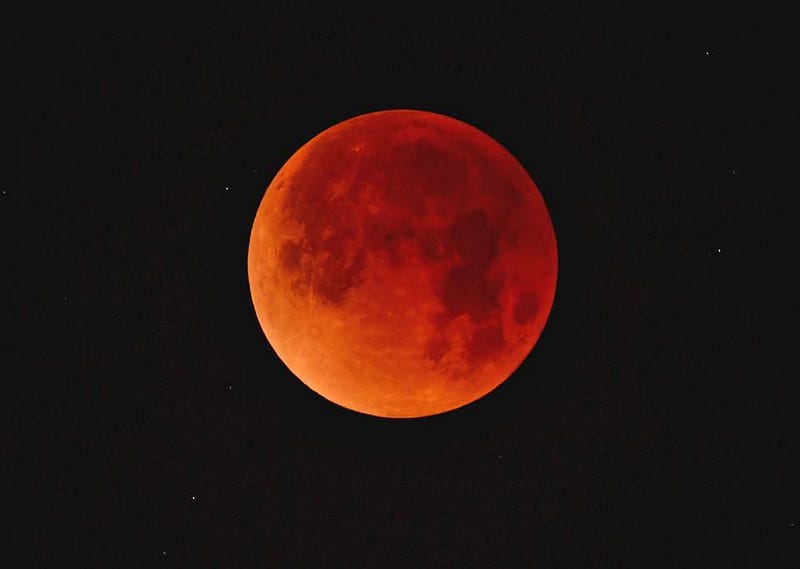
If you have a pair of binoculars or a telescope, watching the region where the Earth’s shadow ends is a great way to look for interesting features. Some of the most interesting sights include crater walls and wall changes on the Moon as the Earth’s shadow advances, along a narrow, blue band at the edge of the shadow, caused by the effects of Earth’s atmosphere.
When you get very close to totality, a thin sliver of illuminated Moon will shine white, while the blue band appears just beyond that and the portion of the Moon that’s eclipsed will finally appear red to your eyes. This is sometimes called the Japanese lantern effect, for obvious reasons.
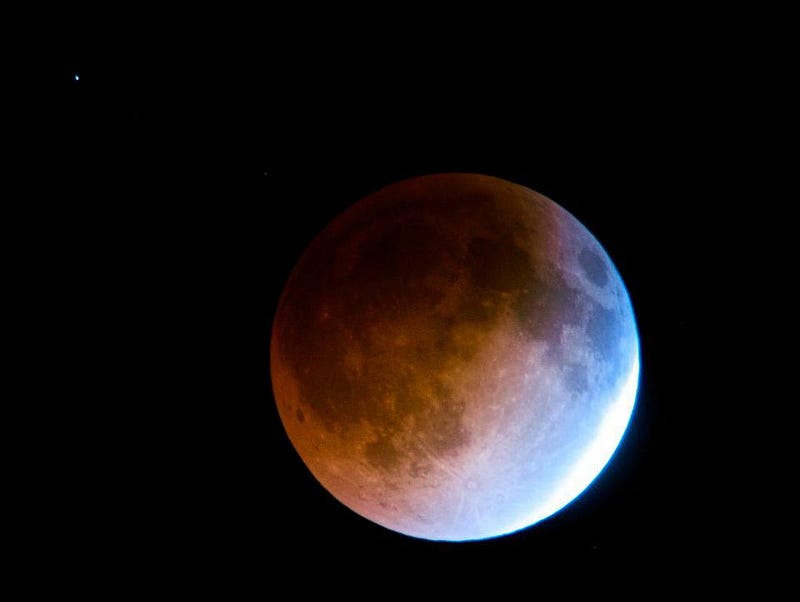
During totality, even a full-on telescope doesn’t need a lunar filter any longer.
You should be able to see large, prominent craters through binoculars, including Tycho, Copernicus, and Aristarchus.
You’ll be able to see crater rays emanating from them as well, along with ridge lines dotting the lunar highlands.
All of the lunar maria will be visible: the dark features that are remnants of liquid lava pools that formed billions of years ago on the Moon.
And, with the light pollution of the Moon gone, if you’re at an otherwise dark-sky site, you’ll be able to see the Milky Way, deep-sky objects like star clusters and even, potentially, another galaxy. If you’re far enough north, the aurora borealis might show up! Look around you; the entire sky is yours to take in!
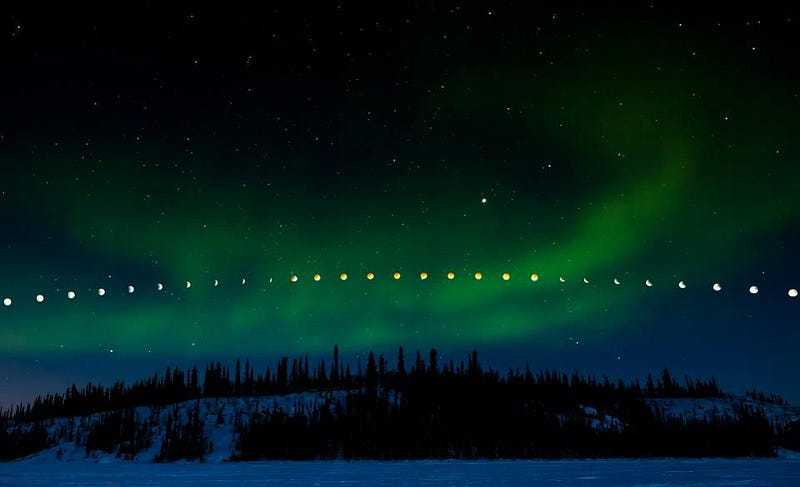
Beyond that, you’ll need to know when these phases occur. For Europe and Africa, the eclipse times are shown relative to GMT, with people in Iceland, the UK, Portugal, and Norway getting the entire eclipse, while those farther east and south getting the early stages before moonset/sunrise ruins their view. From North and South America, everyone will be able to view it, and the four major United States timezones (EST, CST, MST, and PST) are included, along with Alaska (AKST) time. People in Hawaii (HST) and far-eastern Asia will get to see the Moon rise mid-eclipse (after the Sun sets), but will miss the early stages.
Here’s when the various phases occur, with PM times corresponding to January 20th and AM times corresponding to January 21st:
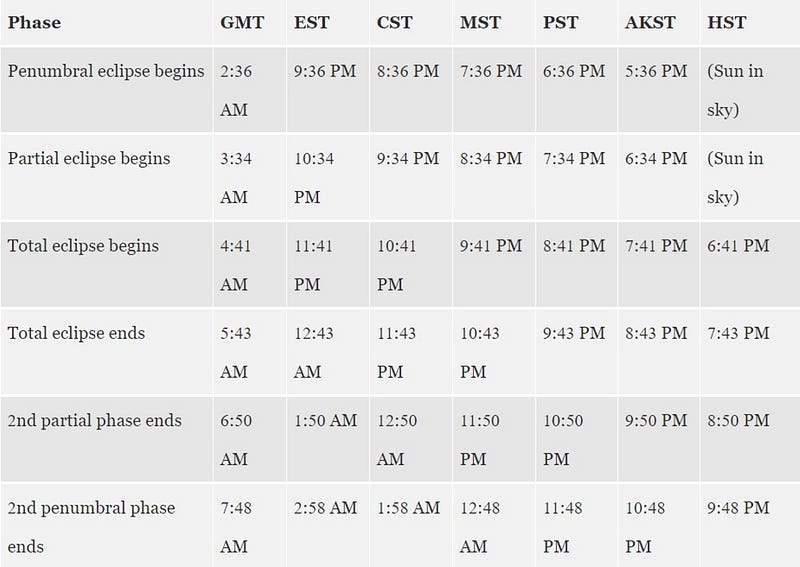

You’ve likely seen lots of stories about the “Super Blood Wolf Moon eclipse” going around, but the real star of the show is that this is a total lunar eclipse that will be easily and spectacularly visible from a large part of the world. Yes, the Moon will turn red, but that’s just an effect of the sunlight that filters through Earth’s atmosphere falling on the lunar surface. Yes, it’s a Supermoon, but 3-to-4 full Moons a year occur close to perigee and appear a few percent bigger and brighter than normal. And yes, it’s a Wolf Moon, but all full Moons have a few names that date back to cultures that kept time based on a lunar calendar.
The big story is that there’s a wonderful, natural show coming to the night sky, and that skywatchers anywhere in the Americas, plus many locations in Europe, Africa, and Asia are all invited to the performance. Now, you’ve got everything you need to know to go and enjoy it to the fullest.
Ethan Siegel is the author of Beyond the Galaxy and Treknology. You can pre-order his third book, currently in development: the Encyclopaedia Cosmologica.





